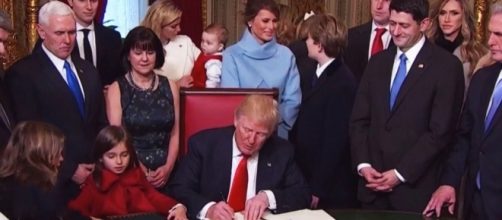There are voices already calling for impeachment proceedings against President Trump, including California Rep. Maxine Waters, Maryland Rep. Jamie Raskin, and Texas Rep. Joaquin Castro, but Democratic leaders are trying to quiet the cries of outrage and are instead calling for investigation, not impeachment. Rep. Brendan Boyle (D -PA) said, “The ‘I’ word we should be focused on is investigations.”
What is Impeachment?
Impeachment is a big legal move and one which is viewed by the Democratic leadership as a trap since the Senate is in the hands of the Republicans anyway.
It consists of a charge of malfeasance in office, specifically "treason, bribery, or other high crimes and misdemeanours".
The term misdemeanours is extremely vague and essentially means that almost anything can be used as crimes if enough people in the country and therefore in Congress feels it is essential to the health of The Republic to remove a President or Vice President from office. It’s never happened - not once.
Only two Presidents, Andrew Johnson, and Bill Clinton have been Impeached (charged) in the history of the Republic and what many Republicans always forget to mention is that Clinton (and Johnson) were both acquitted. President Nixon would probably have been convicted and forced to resign but he avoided the trial by resigning on his own.
The process starts with The House of Representatives generating and voting on Articles of Impeachment which are the charges being brought. That’s Impeachment but then there is a trial in The Senate to determine if the charges rise to the level of a conviction and expulsion from office.
The 25th amendment
But that’s not the only way to remove a President of The United States. When we moved to the electronic era it became obvious that the succession process if a president becomes incapacitated or dies, resigns, or is removed from office, was inadequate and the 25Th Amendment to the Constitution was created.
Article XXV has been in force since February 10, 1967. The Amendment made it clear finally just when the Vice President became President and when he became Acting President.
It doesn’t, by the way, include any wording suggesting that the President could be a woman.
The critical section is #4 which, in part, says that “a majority of the principal officers of the executive departments (The Cabinet),” and the Vice President can, simply by a short letter, declare the President incapable of discharging his office properly and the Vice President immediately becomes Acting President.
The makeup of the Cabinet changes over time but today that means that eight Cabinet officers and the Vice President can write a letter, send it to the Speaker of the House and copy the President pro tempore of the Senate and the President is automatically removed from office temporarily.
He can then challenge this and effect there would be the equivalent of a trial to decide if the Acting President would become President.
There is a complicated procedure involved in deciding if the initial removal is valid or should be reversed, but the original ousting of a president really only requires that simple letter and 9 total signatures.
(Please note, your reporter is not suggesting that either of these two procedures should be invoked against President Trump; I am merely explaining the applicable laws.)

